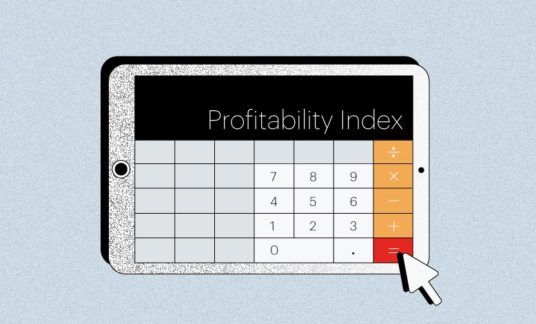There are all sorts of reasons businesses need to take out loans or use credit. It may be for one-time equipment purchase, buying inventory or funding purchase orders or to ensure cash flow and meet payroll in lean months. With that in mind, what is a nonrevolving line of credit — and how can it help your business?
There are 2 different types of credit:
- Revolving credit
- Nonrevolving credit
When you are considering applying for credit, it is important to understand the differences between the 2. We’ll explain what a nonrevolving line of credit is, how it differs from revolving credit and discuss the pros and cons of each.
Here’s everything you need to know about nonrevolving credit to make smarter decisions.
What Is a Nonrevolving Line of Credit?
Nonrevolving credit is a line of credit that remains open until you repay it. You can draw against the line of credit up to the maximum amount.
Once you pay it off, however, you are unable to access additional funds through your nonrevolving line of credit. When repaid, the account is closed and can’t be used again.
How Does Nonrevolving Credit Work?
You also may hear it called a noncommitted line of credit because you can initiate the line of credit without having to commit the funds to any particular use. An example might be to have a ready line of credit to manage potential cash flow shortages at the end of each month. You only draw out against it if and when you need it.
When you take out a loan on your nonrevolving credit account, you will typically commit to repayment on a fixed schedule although some lenders allow other repayment terms.
Nonrevolving credit does include loans for specific reasons, such as a vehicle loan, mortgage, or equipment loan that provides a lump sum for a purchase and requires installments payments. However, a nonrevolving line of credit can be used for any business-related expense.

What’s the Difference Between Revolving Credit and Nonrevolving Credit?
Revolving credit can be used repeatedly up to credit limits as long as you keep the account open and you aren’t delinquent in your payments. With revolving credit, balances, amount of available credit and minimum payments will vary depending on how credit is used and how payments are made.
A business credit card is a common example of a revolving credit account. You can use them when you need them and pay them off all at once or stretch payments over time. Even once the account is paid in full, you can still use a revolving credit account.
With nonrevolving credit, whether it’s a one-time loan such as an auto loan or student loan or an ongoing line of credit, once a nonrevolving credit balance has been repaid, the account is closed and you can no longer receive funding from the account.
So, which is better for you and your business?
Revolving Credit Versus Nonrevolving Credit: Which Is Better?
Both revolving credit and nonrevolving credit accounts have similarities. You will still need to fill out an application with a lender and go through the approval process. Once you have been approved, however, there’s little maintenance involved. You can typically use the funds any way you want.
You have some repayment flexibility, too. Paying it off each month is the best way to avoid paying interest and remain current. You also can pay it off over time although this adds interest. The flexibility can be an advantage over an installment loan that requires you to make regular monthly payments at a fixed amount.
Also, both revolving and nonrevolving lines of credit will have better interest rates than typical credit card rates and you may qualify for larger credit amounts.
Another similarity is that if you fail to make your payments when required, it can hurt your credit score. You may be assessed late fees and, in some cases, have your interest rates increased.

Pros and Cons of Nonrevolving Credit
First, let’s take a look at the pro side of nonrevolving credit.
Advantages of Nonrevolving Credit
- Lower interest rates: Nonrevolving credit typically has a lower interest rate than a revolving account.
- Funding amounts: Lenders will often make a significantly larger amount of funds available with a nonrevolving credit account.
- Risk mitigation: Once funds are repaid, you can’t use the nonrevolving line of credit again, so you are less likely to continually run up charges.
However, there are also some disadvantages of nonrevolving credit.
Disadvantages of Nonrevolving Credit
- The account closes upon repayment: Once the loan is paid, the account is closed. As you make repayments, the credit limit doesn’t replenish.
- Additional funding: If you need additional credit, you will have to look elsewhere or start the loan process all over again. There is also no guarantee that you can get approved for the same terms. If your credit situation has deteriorated, you may not be able to get approved again.
- May require collateral: Depending on your credit history, credit score, lender and loan terms, you may be required to pledge collateral. If you fail to repay your debt, the lender can seize and sell your pledged assets.
With a nonrevolving credit account, you may be required to stick to a fixed repayment schedule. There may also be prepayment penalties if you want to pay off your loan early.
Similarly, there are pros and cons for revolving credit accounts as well.
Advantages of Revolving Credit
- Continued borrowing: With a revolving credit account, you borrow what you need up to your limit whenever you need it — as long as you make at least the minimum payments. You don’t need to reapply for a loan each time. In other words, you can draw money, pay it back, and then draw more over and over as long as you stay under your limit and keep paying at least the minimum payment.
- Limits can increase: As you use credit wisely and make payments promptly, lenders will often increase credit limits. This lets you increase your purchase power.
- Risk of using credit poorly: If you use credit poorly or just make the minimum monthly payments, you can accrue significant debt with high-interest rates.
Revolving credit also has its disadvantages.
Disadvantages of Revolving Credit
- Higher interest rates: Revolving credit accounts will almost always have higher interest rates attached because of the higher risk associated with them.
- Lower credit limits: You will also likely have lower credit lines with a revolving credit account vs. a nonrevolving credit account. This can limit your buying power using credit.
The Key Difference Between Nonrevolving Credit and Revolving Credit
This chart shows the key difference between nonrevolving credit and revolving credit. These are the typical conditions, although your situation may vary depending on your credit history and lender requirement.
| KEY DIFFERENCES | NONREVOLVING CREDIT | REVOLVING CREDIT |
| Interest Rates | Lower interest rates | Higher interest rates |
| Security Interests | Often require collateral | Usually don’t require collateral |
| Credit Limits | Higher borrowing amounts | Lower borrowing amounts |
| Fund replenishment | Don’t replenish | Replenishes as you pay it off |
| Total Costs | Fixed payment costs | Varies depending on usage |
Nonrevolving credit will typically have higher credit limits and lower interest rates. Revolving credit provides a bit more flexibility and use.
So, revolving credit or nonrevolving credit, which is better for you? That’s up to you. Examine the pros and cons and look carefully at the terms before you sign.










